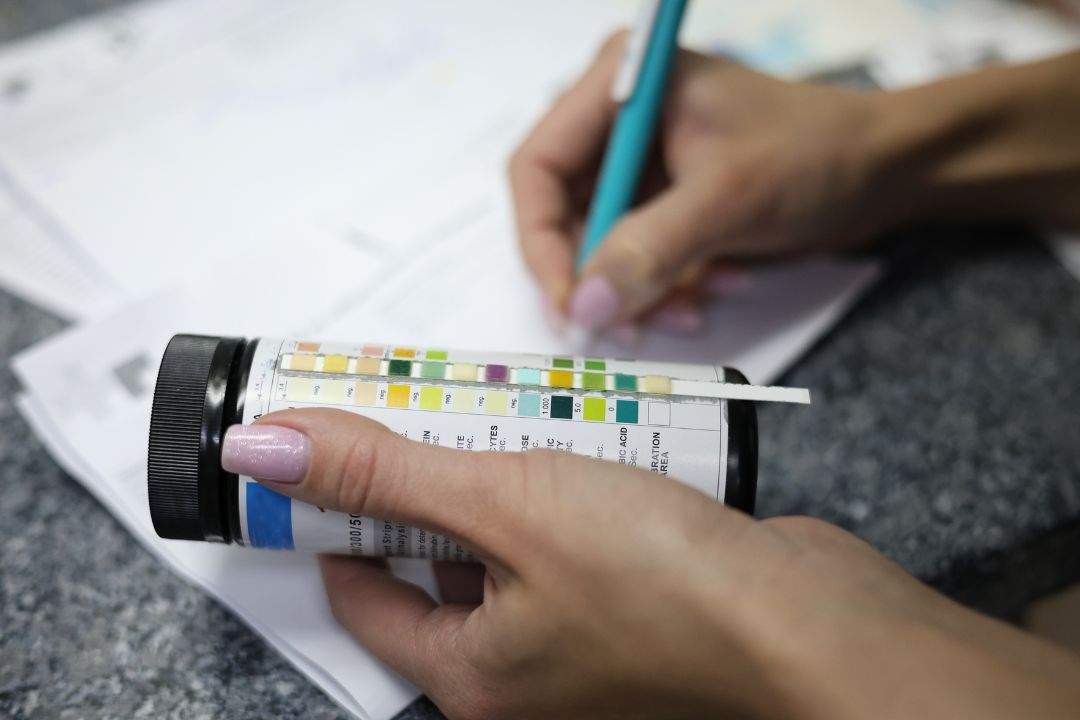Table of Contents
Urobilinogen, a vital component found in urine, often flies under the radar in discussions about urinary health. However, its presence and levels can provide valuable insights into various aspects of our well-being, particularly liver function and certain diseases. In this article, we delve into the significance of urobilinogen, its role in the body, how it’s detected, and what abnormal levels might indicate.
1. Introduction
What is urobilinogen?
Urobilinogen is a colorless compound formed during the breakdown of bilirubin in the liver and intestines. It’s eventually excreted in urine and feces, imparting the characteristic yellow color to both.
Importance of urobilinogen in urine
While often overshadowed by other urinary constituents, urobilinogen serves as a valuable biomarker for liver function and certain diseases, making its detection crucial in clinical settings.
Brief overview of detection methods
Several methods are employed to detect urobilinogen in urine, ranging from simple chemical reagent strip tests to more sophisticated laboratory analyses.
2. Urobilinogen: A Vital Component
Role in the breakdown of bilirubin
Urobilinogen is a byproduct of heme metabolism, a process that starts with the breakdown of hemoglobin from old red blood cells. Bilirubin, a yellow pigment, is formed and further metabolized into urobilinogen in the liver.
Importance for liver health
The presence of urobilinogen in urine reflects the efficiency of bilirubin metabolism and liver function. Low levels may indicate impaired liver function, while elevated levels could signify liver disease or other conditions.
3. Normal Levels and Variations
Typical urobilinogen levels
In healthy individuals, urobilinogen levels in urine typically range from 0.2 to 1.0 mg/dL. However, these values can vary depending on factors such as age, sex, and diet.
Factors affecting urobilinogen levels
Various factors can influence urobilinogen levels, including medications, diet, hydration status, and underlying medical conditions.
4. Clinical Significance
Diagnostic value in liver and biliary tract diseases
Abnormal urobilinogen levels can indicate liver diseases such as hepatitis, cirrhosis, or conditions affecting the biliary tract, such as gallstones or cholecystitis.
Monitoring liver function
Serial measurements of urobilinogen in urine can be useful for monitoring liver function and assessing response to treatment in patients with liver diseases.
5. Urobilinogen Detection Methods
Chemical reagent strip tests
Urobilinogen can be detected qualitatively using reagent strips that change color in the presence of the compound. While these tests are convenient for rapid screening, they may lack accuracy compared to laboratory methods.
Laboratory analysis techniques
Quantitative measurement of urobilinogen levels in urine can be performed using spectrophotometry or chromatography techniques in a clinical laboratory setting, providing more precise results.
Point-of-care testing
Advancements in technology have led to the development of point-of-care testing devices capable of accurately measuring urobilinogen levels within minutes, facilitating quicker diagnosis and treatment decisions.
6. Factors Affecting Test Results
Medications and supplements
Certain medications and supplements can interfere with urobilinogen detection methods, leading to false-positive or false-negative results. Healthcare providers should consider medication histories when interpreting test results.
Diet and hydration
Factors such as diet and hydration status can influence urobilinogen levels in urine. Increased intake of certain foods or fluids may temporarily elevate urobilinogen levels, while dehydration can concentrate urine and affect test accuracy.
7. Interpretation of Results
High urobilinogen levels: implications
Elevated urobilinogen levels may indicate increased bilirubin production or impaired liver function. Further evaluation is necessary to determine the underlying cause, which could range from liver diseases to hemolytic disorders.
Low urobilinogen levels: considerations
Conversely, low urobilinogen levels may suggest decreased bilirubin production or enhanced liver clearance. Healthcare providers should investigate potential causes, such as obstructive jaundice or certain medications.
8. Importance in Specific Conditions
Hepatitis and liver cirrhosis
Patients with hepatitis or liver cirrhosis often exhibit elevated urobilinogen levels due to impaired liver function and bile excretion. Monitoring urobilinogen levels can aid in disease management and treatment.
Biliary obstruction
Biliary obstruction, caused by gallstones or tumors, can lead to decreased urobilinogen excretion and elevated bilirubin levels in the blood. Detection of urobilinogen in urine can help diagnose and monitor such conditions.
9. Future Directions
Research advancements
Ongoing research aims to improve the accuracy and accessibility of urobilinogen detection methods, potentially leading to the development of novel diagnostic tools for liver diseases and related conditions.
Potential diagnostic innovations
Advancements in technology, including biosensors and microfluidic devices, hold promise for revolutionizing urobilinogen testing, offering faster and more reliable results for clinicians and patients alike.
10. Conclusion
In conclusion, urobilinogen plays a crucial role in assessing liver function and diagnosing various hepatic and biliary tract diseases. Understanding its significance and the methods used for its detection is essential for healthcare providers in clinical practice. By monitoring urobilinogen levels in urine and interpreting results accurately, clinicians can effectively manage patients’ conditions and improve outcomes.
FAQs about urobilinogen and its detection
What can cause elevated urobilinogen levels in urine?
Elevated urobilinogen levels can result from liver diseases such as hepatitis or cirrhosis, hemolytic disorders, or conditions affecting bile excretion.
Can medications affect urobilinogen test results?
Yes, certain medications and supplements can interfere with urobilinogen detection methods, leading to inaccurate results. Remember to disclose all medications you’re taking to your healthcare team.
Are there any dietary factors that influence urobilinogen levels?
Yes, diet can impact urobilinogen levels in urine. Consuming foods rich in heme or undergoing fasting may affect test results.
How often should urobilinogen levels be monitored in patients with liver disease?
The frequency of monitoring urobilinogen levels depends on the individual patient’s condition and the healthcare provider’s recommendations. In some cases, regular monitoring may be necessary to assess disease progression and treatment response.
Can urobilinogen testing be performed at home?
While there are home test kits available for detecting urobilinogen in urine, their accuracy may vary. It’s generally recommended to have urobilinogen levels measured in a clinical laboratory for reliable results.
